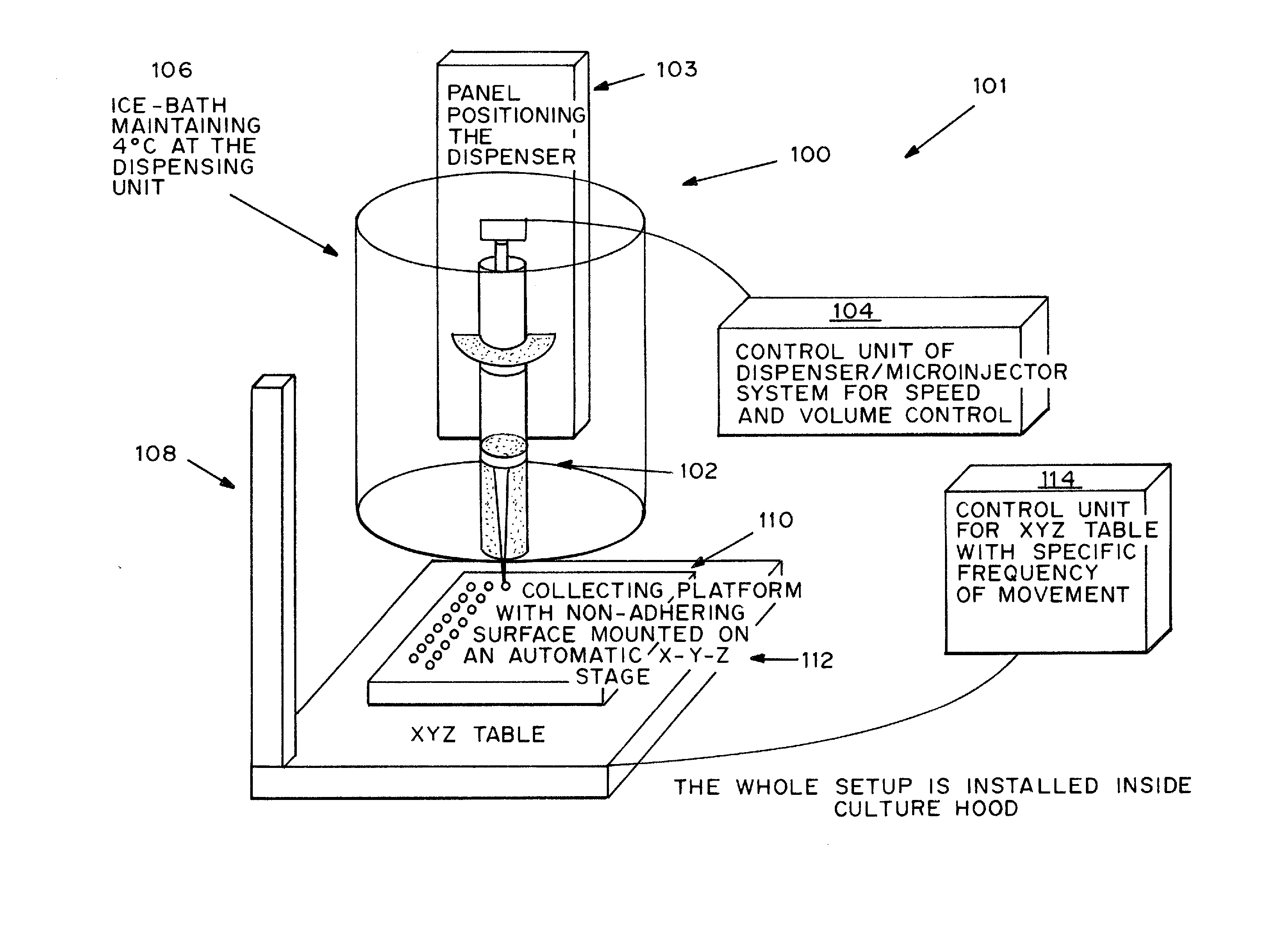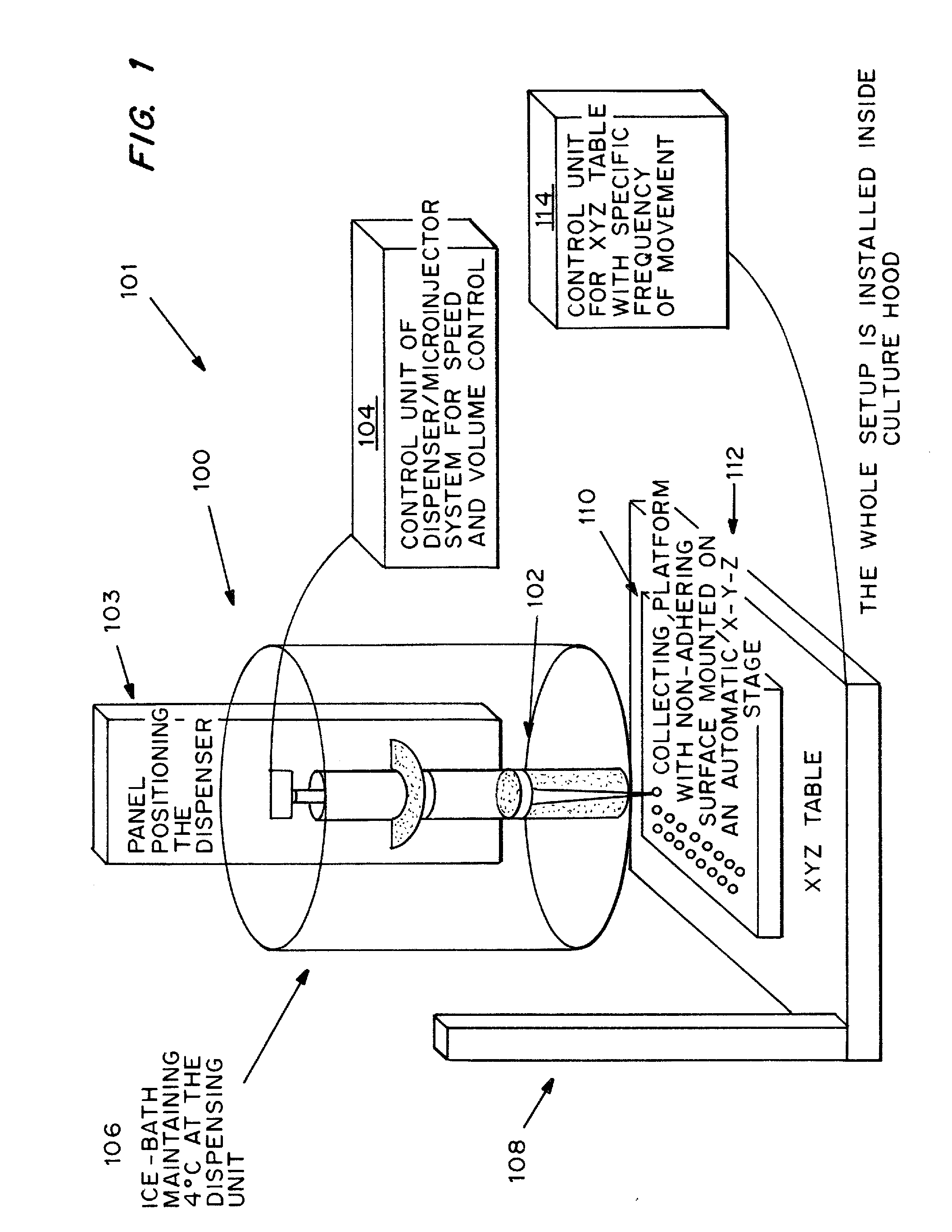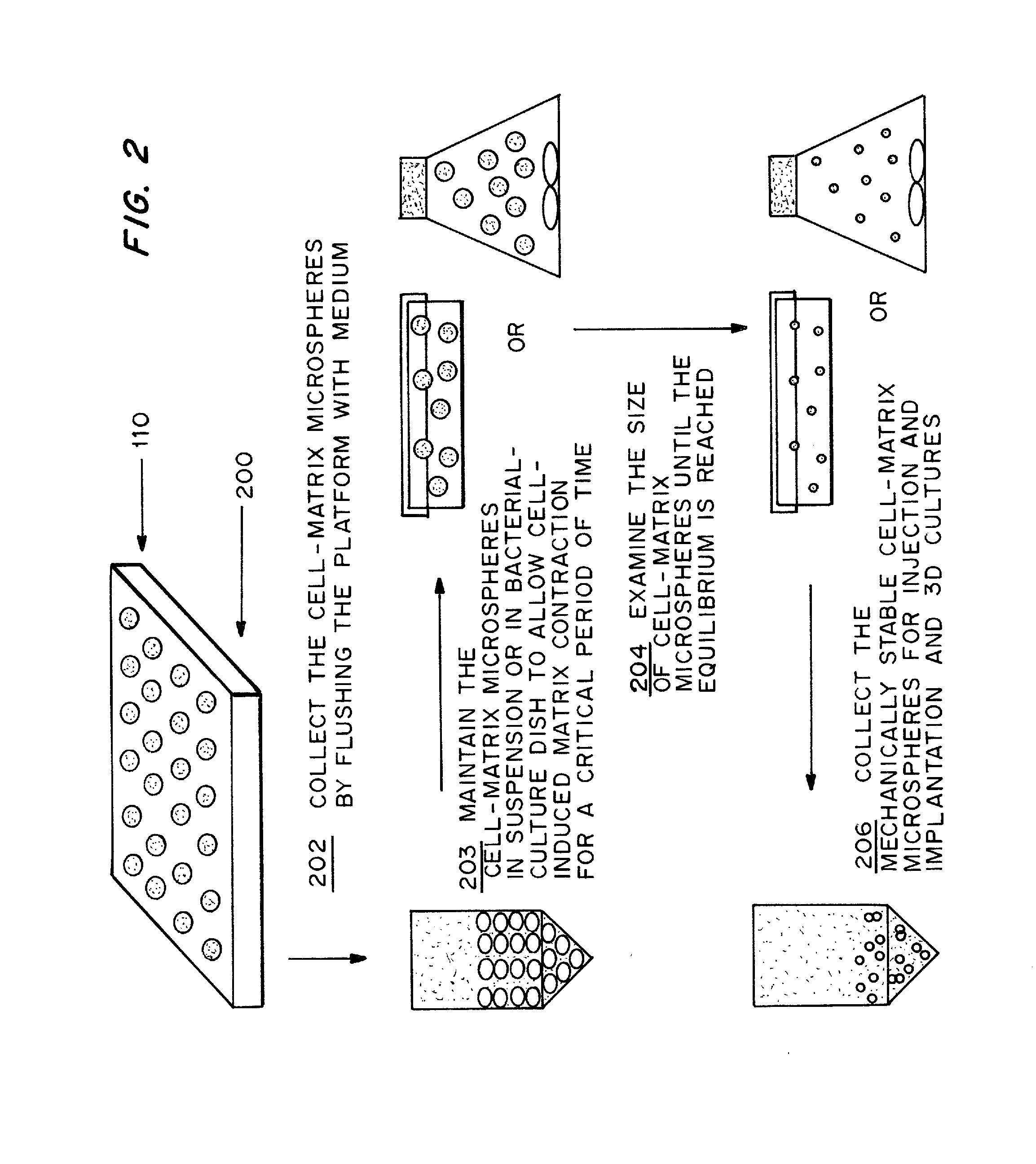Cell-matrix microspheres, methods for preparation and applications
a cell-matrix and microsphere technology, applied in the field of cell-matrix microspheres, can solve the problems of preventing their use in regenerative medicine and tissue engineering, unable to allow cell migration and penetration, and no microencapsulation system for these materials, so as to increase protein productivity
- Summary
- Abstract
- Description
- Claims
- Application Information
AI Technical Summary
Benefits of technology
Problems solved by technology
Method used
Image
Examples
example 1
Production of hMSC-Collagen Microspheres
[0090] Rat-tail collagen solution type I in acetic acid, which mainly consists of triple helical monomers, was neutralized by NaOH and diluted into a final concentration of 0.5 mg / ml. All procedures were done in an ice-bath to prevent collagen gel formation. Human bone marrow derived mesenchymal stem cells (MSCs) in full medium, DMEM-LG with 10% FBS and 1% P / S, were suspended thoroughly in the neutralized collagen solution as soon as possible. A dispenser was then loaded with the ice-cold cell mixture and a small volume of 2.5 μl was dispensed at a time onto a bacterial culture dish covered with UV-irradiated parafilm. To prevent air-bubble formation in the liquid droplets, the dispenser was moved upwards or the collection platform downwards after dispensing the liquid droplets. The liquid droplets were thermally induced to reconstitute into a gel meshwork of organized collagen fibrils, interacting with the encapsulated cells, to form solid m...
example 2
Production of Mechanically Stable Cell-Matrix Microspheres and Controlling Parameters of the Microsphere Size
[0091] Materials and Methods
[0092] Following the steps shown in FIG. 2, rat-tail collagen solution type I was neutralized and diluted into different concentrations (0.5, 1.0, 2.0 and 3.0 mg / ml) in the presence of different concentrations (2×104, 1×105 and 5×105 cells / ml) of human bone marrow derived MSCs in DMEM medium with 10% FBS as described in Example 1. The cell-matrix microspheres were collected into a DMEM medium containing bacterial culture dish. The collected microspheres were maintained at their free-floating state in the culture vessel at 37° C. for 2 to 7 days until the equilibrium is reached as characterized by a constant microsphere size.
[0093] Results
[0094] The temporal morphological change of the cell-matrix microspheres with different cell densities and collagen matrix densities were recorded. Microspheres at day 0 showed individual cells embedding in the...
example 3
Controlling the Growth Rate of Encapsulated hMSCs Inside the Collagen Microspheres
[0095] Materials and Methods
[0096] hMSCs were isolated from bone marrow aspirates from donors with informed consent in compliance with the Institute human ethics regulations. hMSCs were cultured as described by Li et al. 2004. Cells harvested from passage 2 and 3 by traditional monolayer culture were cryopreserved and used for production of cell-matrix microspheres with different collagen density: 0.5 and 2 mg / ml. Fully contracted mechanically stable hMSCs-collagen microspheres were obtained as described in Examples 1 and 2. These microspheres were incubated with 2 μM Calcein AM and 4 μM Ethidium homodimer-1 for 45 minutes for simultaneous staining of live and dead cells. Stained microspheres were fixed in 4% paraformaldehyde for 1 hour and examined using a laser confocal scanning microscope for stacked images. In a separate experiment, microspheres, with 100 microspheres per plate in triplicates, we...
PUM
| Property | Measurement | Unit |
|---|---|---|
| temperature | aaaaa | aaaaa |
| temperature | aaaaa | aaaaa |
| temperature | aaaaa | aaaaa |
Abstract
Description
Claims
Application Information
 Login to View More
Login to View More - R&D
- Intellectual Property
- Life Sciences
- Materials
- Tech Scout
- Unparalleled Data Quality
- Higher Quality Content
- 60% Fewer Hallucinations
Browse by: Latest US Patents, China's latest patents, Technical Efficacy Thesaurus, Application Domain, Technology Topic, Popular Technical Reports.
© 2025 PatSnap. All rights reserved.Legal|Privacy policy|Modern Slavery Act Transparency Statement|Sitemap|About US| Contact US: help@patsnap.com



